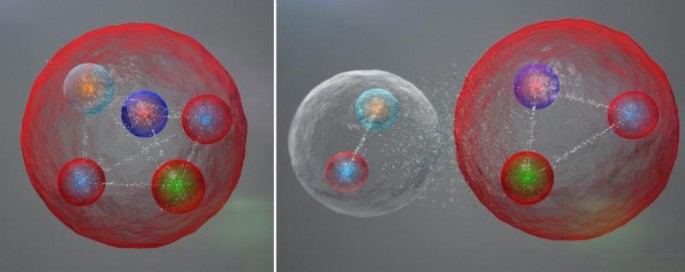Some 50 years ago, physicists have theorized an elusive subatomic particle called the pentaquark and now, the first real evidence that they indeed exist is here, courtesy of the world's largest particle collider, the Large Hadron Collider, housed in CERN, Switzerland.
Quarks were first predicted by physicist Murray Gell-Mann during the 1960s where they are found to be minute subatomic particles made up of neutrons and protons in the nucleus of atoms. There are three quarks for each larger composite particle. Traditionally, particles only carry three quarks however, physicists also believe that they can also carry five quarks which are labeled as "pentaquarks".
Some early research and experiments present evidence of these pentaquarks but they were riddled with errors. According to Patrick Koppenburg of the European Organization for Nuclear Research (CERN), pentaquarks have quite a history establishing their existence as the term "pentaquark" seems to be cursed with many errors since many discoveries often reveal new results that debunk past ones, making them mere fluctuations or false signals.
During the first introduction of quarks, Gell-Mann had a realization that these three constituent particles are required to form another class of particles called baryons that also included neutrons and protons. Theoretical physicists reveal that pentaquarks can contain four quarks and one anti matter of these particles. When a quark and an anti quark are put together to produce a meson, they become highly unstable and fall apart in less than a second.
The term "quark" is apparently taken from a James Joyce poem called Finnegan's Wake. The physicist Gell-Mann also provided strange names for other types of quarks namely up and down, bottom and top, strange and charm. Each quark also has anti-matter versions of them.
According to LHCb (Large Hadron Collider beauty experiment) spokesperson Guy Wilkinson, the pentaquark is not a new particle since it is a representation of the process of the aggregation of quarks, where quarks are the fundamental constituents of protons and neutrons that possess a truly unique pattern, never seen before in 50 years.
This new study can help better understand the properties of quarks, of how ordinary matter like protons and neutrons originate from. This new study is published in the journal, Physical Review Letters.



























